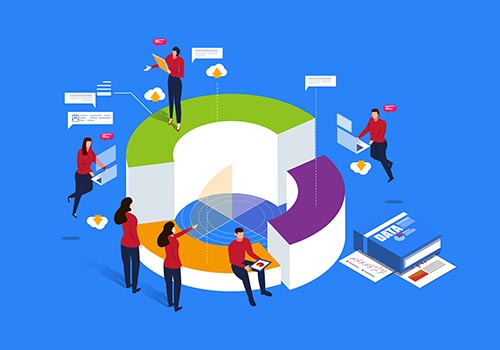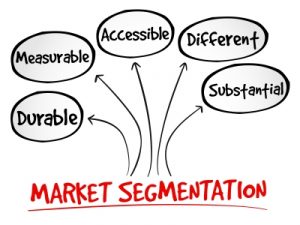Market & Database Segmentation
Learn how using market & database segmentation can satisfy your customers and give your business a competitive advantage.

Strategic Positioning
At a strategic level this is likely to be governed by your organisation’s positioning strategy, but you can also use segmentation at product level to segment your customers and prospects. For example, at SpotlerCRM we identified a need for simpler CRM systems for small and medium sized businesses. Systems that don’t need specialist staff for installation and set up and only a short time to train users.
Our CRM system was created to address this need and now we target that market segment. At product level we can see that new customers need more support than longer term customers and we vary our communications to reflect this using database segmentation. We have three price plans: Starter, Professional and Enterprise, plus a Free CRM option. The different price plans and packages look to address the varying needs of our customers. Enterprise customers typically need more setting up that those using our Free CRM system.

In general, market and database segmentation is good business practice and is about satisfying the customer’s requirements. Meeting customer needs better than your competition gives you competitive advantage.
An End to Mass Marketing
There are not many products today where segmentation has not had an impact. For many years CocaCola had just one product and was mass-marketed. But today even this iconic product has new variations that look to address different customers needs. And it isn’t just the big brands that segment. Look at baked beans. Not only do we have the proprietary brands but also the supermarket home brand all offering low calorie beans, value beans, premium beans and a wide choice of added ingredients!
The use of segmentation in your positioning strategy will also govern choice of differential advantage. This is the difference between your product and your competitors. For example, in pinpointing your target audience’s needs your product might have a competitive edge on quality, functionality or maybe just price.
Identifying Your Market Segments
To identify your segments you will need to find out more about your customers and their buying habits. This information might be very different depending upon whether you are selling B2C (Business to Consumer) or B2B (Business to Business). Whilst there will be some cross-over of criteria, for example, geographic and frequency of purchase, you might also want to consider a number of other influences.
B2C Segments
B2B Segments
Benefits of Segmentation
Whilst the benefit of segmentation for the customer is about addressing their needs better than the competition, there are many benefits for the organisation too.
Firstly, you will reduce your marketing costs by only targeting real prospects. Being more specific about who you are addressing and the benefit you are offering will make it easier to reach that target market. The marketing will be more effective and will help build a relationship with the customer. In time you will create loyalty, i.e. customer retention, and, eventually, advocacy.
For segmentation to be effective the identified group must be distinct, tangible and accessible. You also need to be sure there is a competitor for the group. There would be no point in reducing your price to attract a particular group if your product is already the cheapest.
Segmentation at Product Level
The same theory is likely to apply within your own company. Not all your customers and prospects will be at the same stage in the product life-cycle. New customers will have different needs from those who have been a customer for some time and know your product well so your communication will need to be different.

By segmenting these groups you can target your marketing more effectively. This might mean varying the content of emails, newsletter and offers that you send, or maybe just how you manage their account, e.g. how often do you call them. Understanding their needs and habits will help improve your communication and timeliness.
For example, a new customer may need more support as they start to use your product. Drip feeding them with more information about the products and services in easy to swallow bites will help them get started. Longer term customers may need greater incentives to keep their loyalty. Special offers and new products could help keep them on your side. You might want to consider how easy it is for them to switch suppliers and think about creating “stickiness” – incentives to stay.
Research & Improve Your Data
You might first want to carry out some research to find out more about who your customers are and their buying habits. You may already have data stored that will give you an insight e.g. sales records, or you might need to conduct a survey to find out more. Make a list of what you want to know and work backwards when compiling a questionnaire. Online survey tools like SurveyMonkey are a great asset here.
Tools to Help
If you have a good CRM system with integrated email marketing you will be able to see how these groups and individuals have responded to previous campaigns. Did they open and clickthough on your last campaign? Did they respond to a promotion?
Capturing this level of detail to understand your customer’s interests and needs will put you in a strong position. Segmenting your database to activity level gives you real competitive advantage. And using a good email marketing system that integrates with your CRM will mean you can easily mail your database at an individual level, responding to the customer’s needs.
This technology isn’t just for the Amazon’s of this world – through cloud technology it is now easily affordable for small businesses too, and often free!
Really Simple Systems is now Spotler CRM
The same great technology, a CRM platform that is focused on the needs of B2B marketers, provided by the same great team, at a great price!